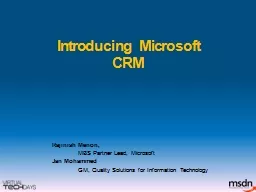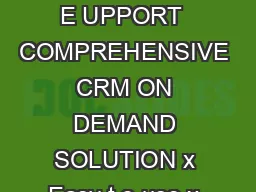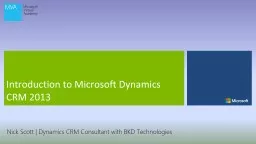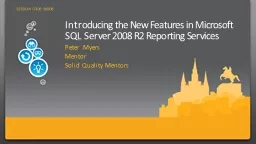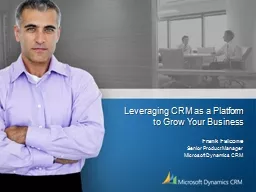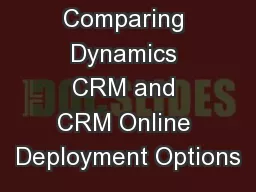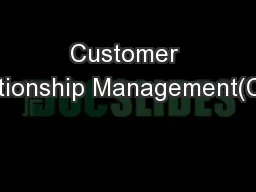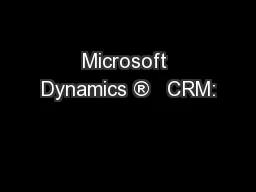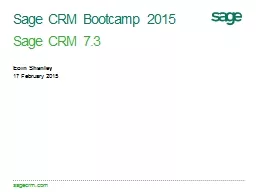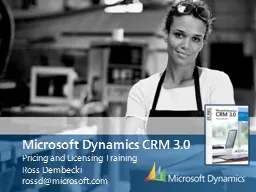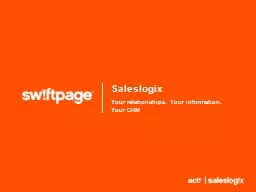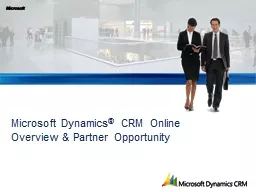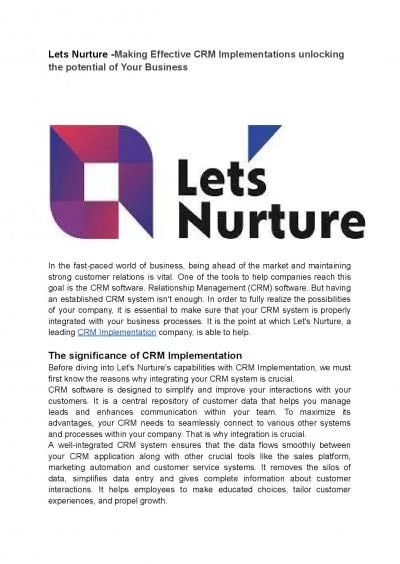PPT-Introducing Microsoft CRM
Author : luanne-stotts | Published Date : 2015-10-07
Rajinish Menon MBS Partner Lead Microsoft Jan Mohammed GM Quality Solutions for Information Technology Agenda Microsoft Dynamics CRM Overview Features Modules Installation
Presentation Embed Code
Download Presentation
Download Presentation The PPT/PDF document "Introducing Microsoft CRM" is the property of its rightful owner. Permission is granted to download and print the materials on this website for personal, non-commercial use only, and to display it on your personal computer provided you do not modify the materials and that you retain all copyright notices contained in the materials. By downloading content from our website, you accept the terms of this agreement.
Introducing Microsoft CRM: Transcript
Download Rules Of Document
"Introducing Microsoft CRM"The content belongs to its owner. You may download and print it for personal use, without modification, and keep all copyright notices. By downloading, you agree to these terms.
Related Documents

